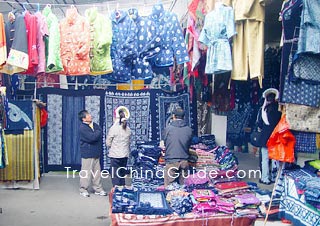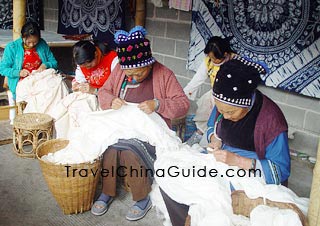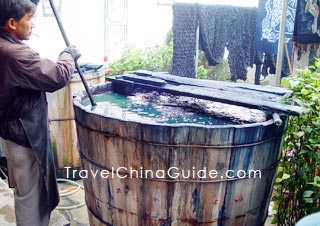Tie-dyeing in Zhoucheng
 |
| Souvenirs made of tie-dyeing cloth |
Tie-dyeing is a technology of printing flower patterns on cloth. As the name suggests, the process is divided into "tie" and "dye". Tie refers to making the cloth into certain shapes by pinching, creasing and flanging it according to the flower patterns. They are then sew or tie tightly together to make a bunch of knots. The aim of tying the knots is to dye the untied part while retaining the original color of the knotted parts. The tighter the knots are tied, the better the effect of the color printing will be achieved.
The dyeing process involves first soaking the 'knots' into clear water, followed by immersing them in the dye vat for a period of time before taking them out to dry. After drying, they are again put back in the dye vat and the process is repeated until a satisfactory color is achieved. Once dried, stitches are taken out of the knots and the cloth is smoothen out to reveal that part of the cloth which was sewn and form beautiful flower patterns and the dye crease marks.
|
|
The tie-dyeing products in Zhoucheng Village are well sought after, both at home and abroad. Do drop by and witness for yourself the process of this historical craftsmanship. Who knows, you will return home with some cheap and beautiful crafted cloths.
- Last updated on Jul. 18, 2022 -

